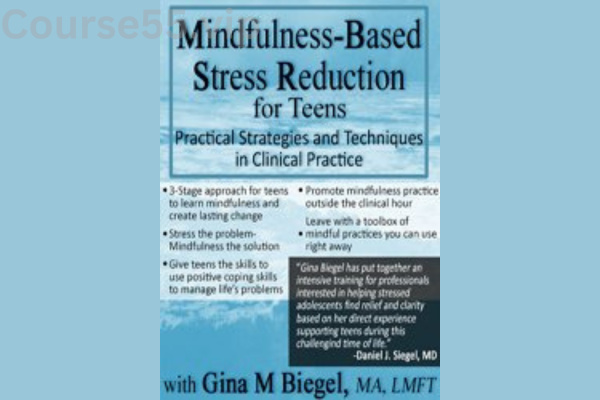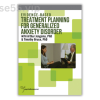Evidence-Based Treatment Planning for Generalized Anxiety Disorder with Timothy Bruce & Arthur Jongsma
$49.00 Original price was: $49.00.$7.70Current price is: $7.70.
Evidence-based Treatment Planning for Generalized Anxiety Disorder – Digital Download!

Evidence-Based Treatment Planning for Generalized Anxiety Disorder with Timothy Bruce & Arthur Jongsma
Overview

Exploring Evidence-Based Strategies for Generalized Anxiety Disorder Treatment
Generalized Anxiety Disorder (GAD) is a widespread mental health condition marked by ongoing and excessive worry, impacting millions across the globe. In an insightful session led by Dr. Timothy Bruce and Dr. Arthur Jongsma, the essential components of evidence-based treatment planning for GAD are meticulously unpacked. This in-depth resource not only outlines DSM-based diagnostic features and symptomatology but also maps out an actionable treatment plan designed to significantly elevate clinical outcomes. Lasting around 70 minutes, the presentation offers a rich blend of theory and practice, aimed at clinicians seeking to sharpen their therapeutic skills in managing GAD.
Throughout their presentation, Bruce and Jongsma skillfully blend historical context with practical, clinical techniques, offering a well-rounded view of treating GAD. Drawing from both North American and European traditions of empirically supported treatments (ESTs), they lay a historical groundwork while delivering current, hands-on insights. The mix of academic depth with live therapy demonstrations creates a compelling educational experience for both seasoned professionals and those newer to the field. The framework they propose is both robust and adaptable, aiming to strengthen therapeutic effectiveness across diverse practice environments.
Decoding the Core Features of GAD
A Closer Look at Symptoms and Definitions
GAD is typically defined by persistent worry spanning a wide range of life areas, often causing serious disruption to daily life. As outlined by DSM-5 criteria, key symptoms include constant restlessness, fatigue, trouble concentrating, irritability, tense muscles, and sleep issues. This constellation of symptoms can feel like an unrelenting storm, darkening even the brightest aspects of everyday life.
DSM-Based Diagnostic Framework
Diagnosis of GAD according to the DSM involves several essential elements:
-
Chronic and excessive anxiety occurring on more days than not, persisting for at least six months.
-
Difficulty in managing worry.
-
Association with three or more of the following:
-
Restlessness or feeling on edge
-
Easy fatigue
-
Trouble focusing or mind going blank
-
Irritability
-
Muscle tightness
-
Disruptions in sleep (difficulty falling or staying asleep, or restless, unsatisfying sleep)
-
These diagnostic benchmarks illustrate that GAD is far more than temporary nervousness—it’s a deeply ingrained condition that can erode a person’s ability to engage with life fully. Timely identification remains crucial, as delays often worsen the disorder’s impact.
Overcoming Obstacles in Building Therapeutic Rapport
Working with clients who experience GAD presents unique relational hurdles. Therapists often feel like captains steering through relentless storms, striving to maintain a steady course despite the client’s pervasive anxiety. Cultivating trust and demonstrating authentic empathy becomes essential for forming a strong therapeutic bond. Bruce and Jongsma emphasize that a solid therapeutic alliance is the foundation for successful treatment.
Grounding Treatment in Research: Evidence-Based Approaches
Tracing the Evolution of Empirically Supported Treatments
Empirically Supported Treatments (ESTs) have emerged through decades of rigorous research, forming the backbone of today’s best practices for treating GAD. Bruce and Jongsma point out that contributions from both North American and European researchers have enriched the field. Cognitive Behavioral Therapy (CBT), for example, has been repeatedly validated as an effective primary treatment method. Studies like Hofmann et al. (2012) highlight CBT’s robust impact on reducing GAD symptoms.
Pharmacological interventions, particularly Selective Serotonin Reuptake Inhibitors (SSRIs), also offer important alternatives for individuals unable to access psychotherapy. Staying updated with the latest scientific findings enables practitioners to offer truly comprehensive care.
Designing Treatment with a Six-Stage Planning Model
Bruce and Jongsma present a structured, six-phase model for treatment planning that blends evidence with client-centered practice:
-
Assessment – Collect an in-depth picture of the client’s psychological and physical functioning.
-
Diagnosis – Confirm GAD diagnosis using validated assessment instruments and DSM-5 standards.
-
Goal Setting – Collaboratively develop clear, measurable objectives with the client.
-
Intervention Selection – Choose evidence-based therapeutic techniques tailored to the client’s specific concerns.
-
Implementation – Execute the intervention while attentively maintaining the therapeutic relationship.
-
Evaluation – Consistently monitor progress and adjust the treatment plan as needed.
This methodical approach offers clinicians a dependable roadmap for customizing interventions to individual client needs.
Translating Theory into Action: Practical Therapy Demonstrations
Showcasing Intervention Techniques
The presentation vividly illustrates key interventions through live therapy vignettes. Techniques like relaxation training and cognitive restructuring are brought to life, bridging the gap between theory and clinical practice. Relaxation techniques, similar to taking a refreshing breath amidst chaos, offer immediate relief for anxious clients. Meanwhile, cognitive restructuring encourages clients to reframe distorted thinking, promoting healthier emotional responses.
Strategies for Preventing Relapse
In addition to symptom management, Bruce and Jongsma stress the importance of equipping clients with long-term tools for resilience. Their relapse prevention strategies help clients build sustainable coping skills.
Key strategies include:
-
Cognitive Self-Monitoring – Encouraging clients to track and reflect on their thought patterns.
-
Scheduled Worry Times – Setting designated periods for addressing anxieties to prevent intrusive worry throughout the day.
-
Coping Strategy Development – Preparing action plans for anticipated stressors and challenges.
These preventative techniques empower clients to manage their anxiety more independently over time.
Closing Reflections: A Promising Path Forward
Drs. Bruce and Jongsma deliver a powerful message: mastering the treatment of GAD requires a balance of scientific precision and compassionate understanding. Their detailed, evidence-informed framework not only meets formal therapeutic standards but also allows for flexibility within the messy realities of clinical work. Steering clients through the complexities of anxiety is no easy task, yet with the guidance provided in this presentation, therapists are better equipped to foster profound and lasting change. As research and best practices continue to evolve, resources like this one stand as essential guides, illuminating the path forward for mental health professionals committed to delivering impactful, evidence-based care.
Frequently Asked Questions:
Business Model Innovation: We operate a group buying strategy, allowing participants to share costs and access popular courses at reduced prices. This model benefits individuals with limited financial resources, despite concerns from content creators about distribution methods.
Legal Considerations: The legality of our operations involves complex issues. Although we don’t have explicit permission from course creators to resell their content, there are no specific resale restrictions stated at the time of purchase. This ambiguity creates an opportunity for us to provide affordable educational resources.
Quality Control: We ensure that all course materials purchased are identical to those offered directly by the creators. However, it’s important to understand that we are not official providers. As such, our offerings do not include:
– Live coaching calls or sessions with the course author.
– Access to exclusive author-controlled groups or portals.
– Membership in private forums.
– Direct email support from the author or their team.
We aim to reduce the cost barrier in education by offering these courses independently, without the premium services available through official channels. We appreciate your understanding of our unique approach.
Be the first to review “Evidence-Based Treatment Planning for Generalized Anxiety Disorder with Timothy Bruce & Arthur Jongsma” Cancel reply
You must be logged in to post a review.

















Reviews
There are no reviews yet.